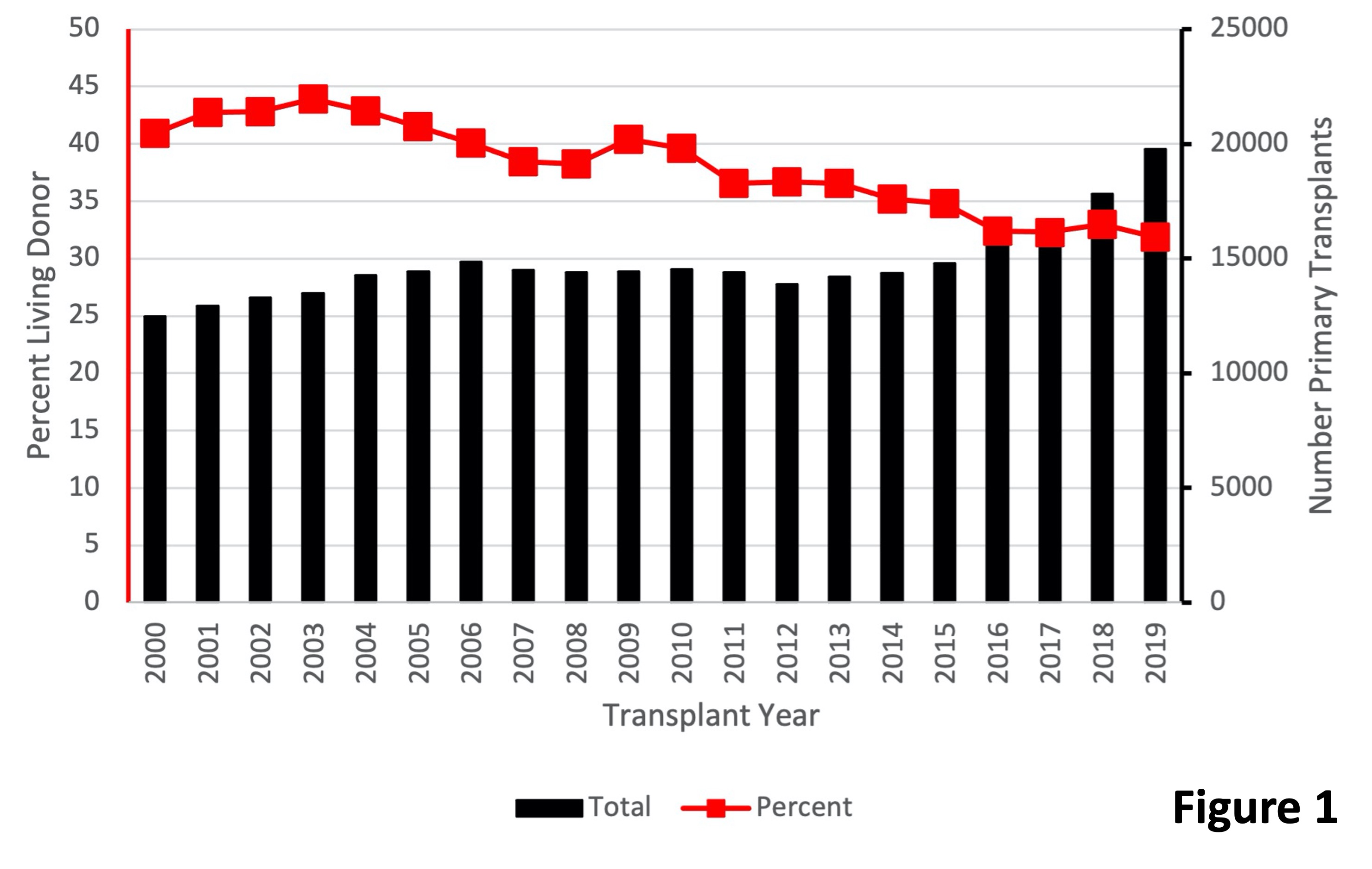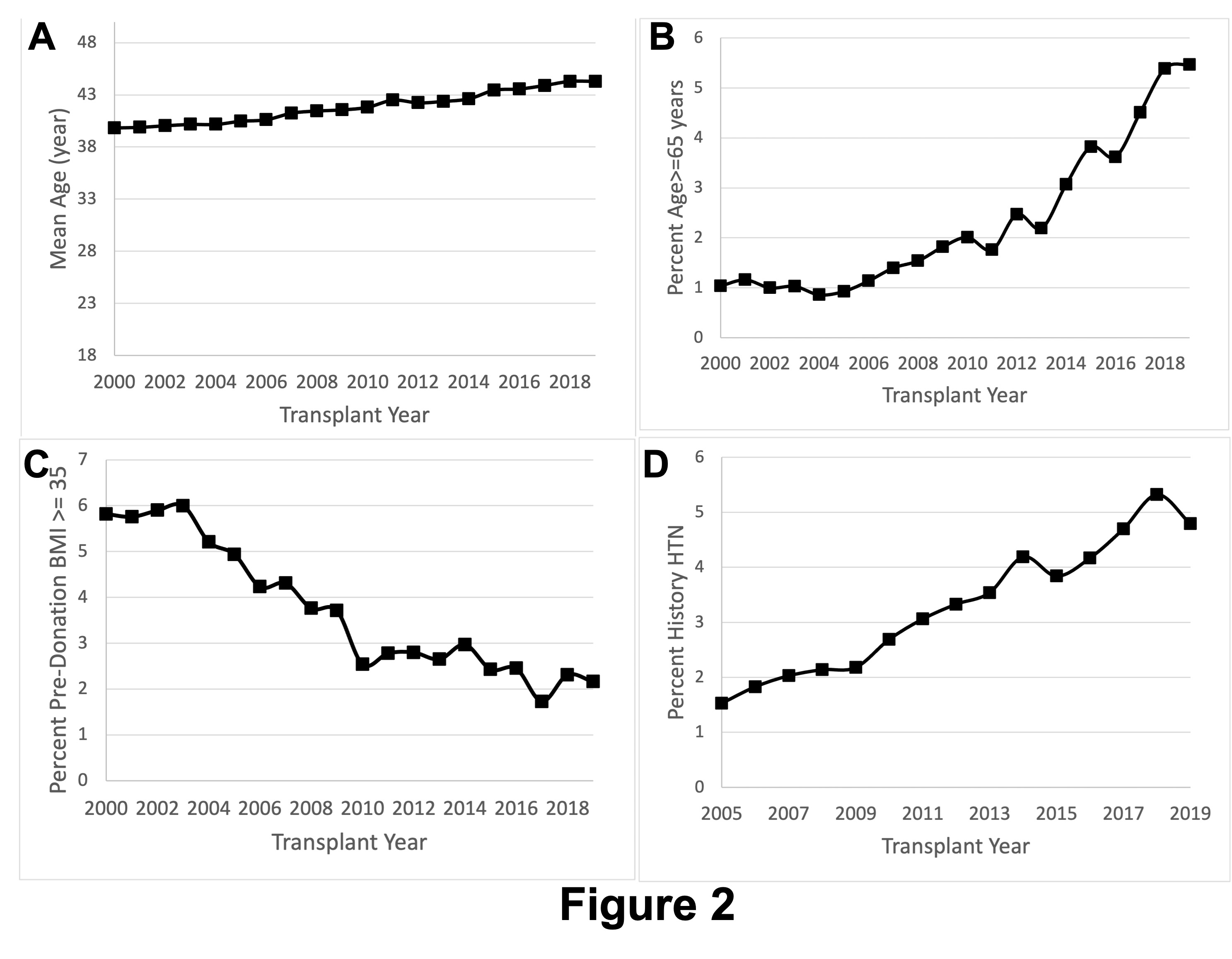Trends of Living Kidney Donor Characteristics in the United States from 2000-2019
1Surgery, Duke University Medical Center, Durham, NC, 2Surgery, East Carolina University, Greenville, NC
Meeting: 2022 American Transplant Congress
Abstract number: 1043
Keywords: Donors, marginal, Kidney transplantation, Living donor
Topic: Clinical Science » Kidney » 40 - Kidney Living Donor: Other
Session Information
Session Time: 7:00pm-8:00pm
 Presentation Time: 7:00pm-8:00pm
Presentation Time: 7:00pm-8:00pm
Location: Hynes Halls C & D
Session Information
Session Time: 5:30pm-7:00pm
 Presentation Time: 5:30pm-7:00pm
Presentation Time: 5:30pm-7:00pm
Location: Hynes Hall C
*Purpose: While studies have been performed analyzing recipient outcomes after extended criteria living donor kidney transplantation (LDKT), the actual long-term trends of demographic and medical characteristics of living kidney donors are understudied.
*Methods: For this retrospective study, baseline characteristics of living kidney donors in the United States from 2000-2019 were extracted from the UNOS database and analyzed.
*Results: A total of 295,211 primary kidney transplants were performed in the study timeframe, of which 111,407 (37.7%) were LDKTs. From 2000-2019, the annual number of LDKTs (5,113 to 6,304) and annual number of overall kidney transplants (12,499 to 19,765) increased. However, the relative proportion of LDKTs decreased (40.9 to 31.9%) (Fig.1). The average donor age of living kidney donors increased (39.8 to 44.3 years) which was consistent with an approximate five-fold increase in the proportion of donors over the age of 65 (1.0 to 5.5%) (Fig.2A,2B). While the average donor BMI did not change (26.9 to 27.0 kg/m2), the proportion of obese donors decreased (5.8 to 2.2%) (Fig.2C). The proportion of donors with a history of hypertension increased (1.5 to 4.8%) (Fig.2D), as did the proportion of female donors (57.1 to 65.3%). The proportion of non-directed kidney donation increased (0.4 to 5.3%), and the proportion of African-American donors decreased (13.0 to 8.9%).
*Conclusions: Consistent with the gradual expansion of inclusion criteria for living kidney donors, our study finds increases in the proportion of donors who are elderly, hypertensive, female, or non-directed donors over the study timeframe. The decrease in donors who are obese or African-American is likely multifactorial but could reflect clinician decisions influenced in part by risk calculators for the development of end stage renal disease in kidney donors. Lastly, the decreasing proportion of LDKTs relative to deceased donor transplants may be due to wider use of deceased donor grafts with higher kidney donor profile index (KDPI).
To cite this abstract in AMA style:
Prabhu NK, Villani V, Samy KP, Sudan D, Ravindra K, Irish W. Trends of Living Kidney Donor Characteristics in the United States from 2000-2019 [abstract]. Am J Transplant. 2022; 22 (suppl 3). https://atcmeetingabstracts.com/abstract/trends-of-living-kidney-donor-characteristics-in-the-united-states-from-2000-2019/. Accessed December 28, 2025.« Back to 2022 American Transplant Congress


